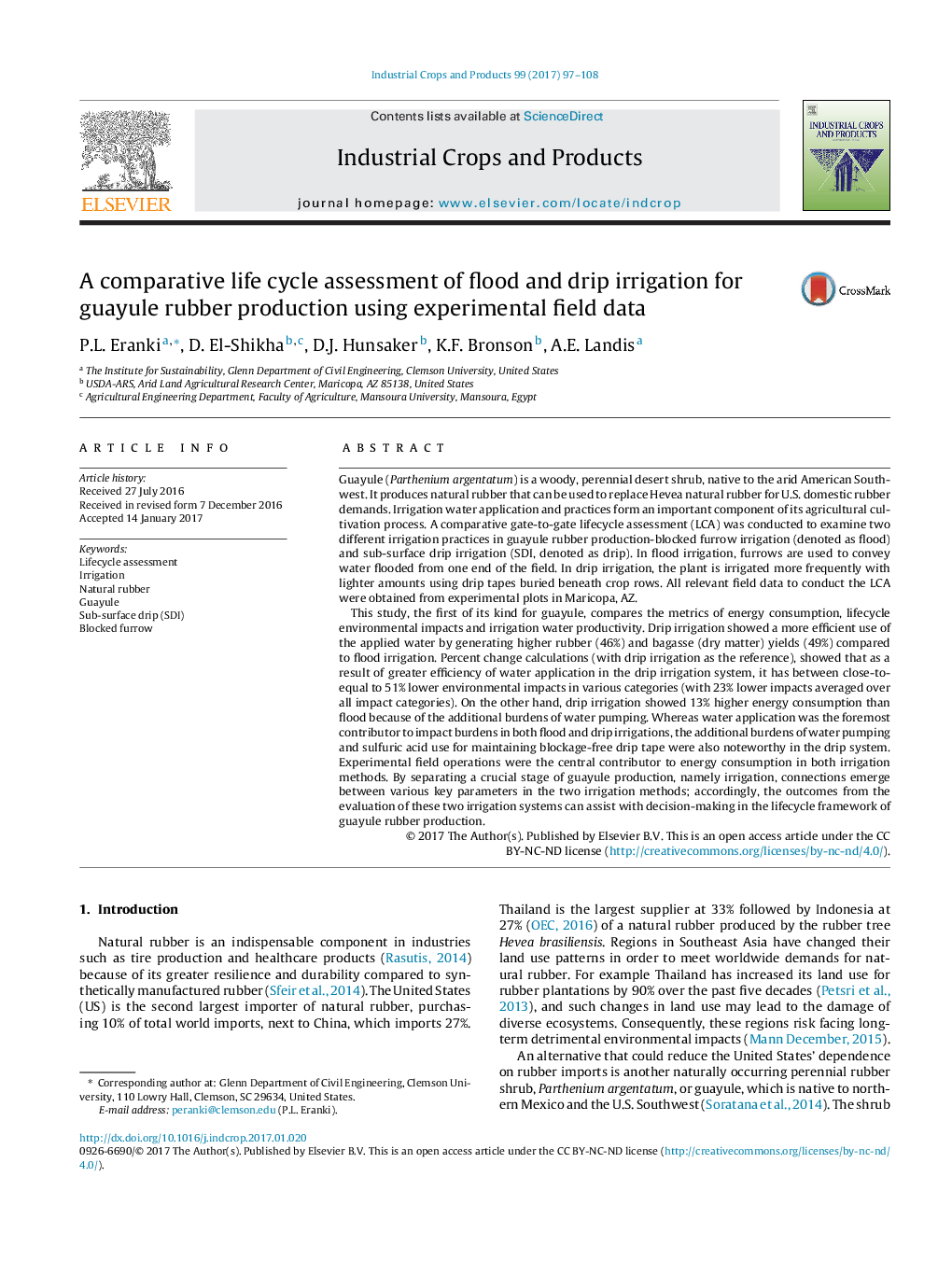| Article ID | Journal | Published Year | Pages | File Type |
|---|---|---|---|---|
| 5761950 | Industrial Crops and Products | 2017 | 12 Pages |
Abstract
This study, the first of its kind for guayule, compares the metrics of energy consumption, lifecycle environmental impacts and irrigation water productivity. Drip irrigation showed a more efficient use of the applied water by generating higher rubber (46%) and bagasse (dry matter) yields (49%) compared to flood irrigation. Percent change calculations (with drip irrigation as the reference), showed that as a result of greater efficiency of water application in the drip irrigation system, it has between close-to-equal to 51% lower environmental impacts in various categories (with 23% lower impacts averaged over all impact categories). On the other hand, drip irrigation showed 13% higher energy consumption than flood because of the additional burdens of water pumping. Whereas water application was the foremost contributor to impact burdens in both flood and drip irrigations, the additional burdens of water pumping and sulfuric acid use for maintaining blockage-free drip tape were also noteworthy in the drip system. Experimental field operations were the central contributor to energy consumption in both irrigation methods. By separating a crucial stage of guayule production, namely irrigation, connections emerge between various key parameters in the two irrigation methods; accordingly, the outcomes from the evaluation of these two irrigation systems can assist with decision-making in the lifecycle framework of guayule rubber production.
Related Topics
Life Sciences
Agricultural and Biological Sciences
Agronomy and Crop Science
Authors
P.L. Eranki, D. El-Shikha, D.J. Hunsaker, K.F. Bronson, A.E. Landis,
